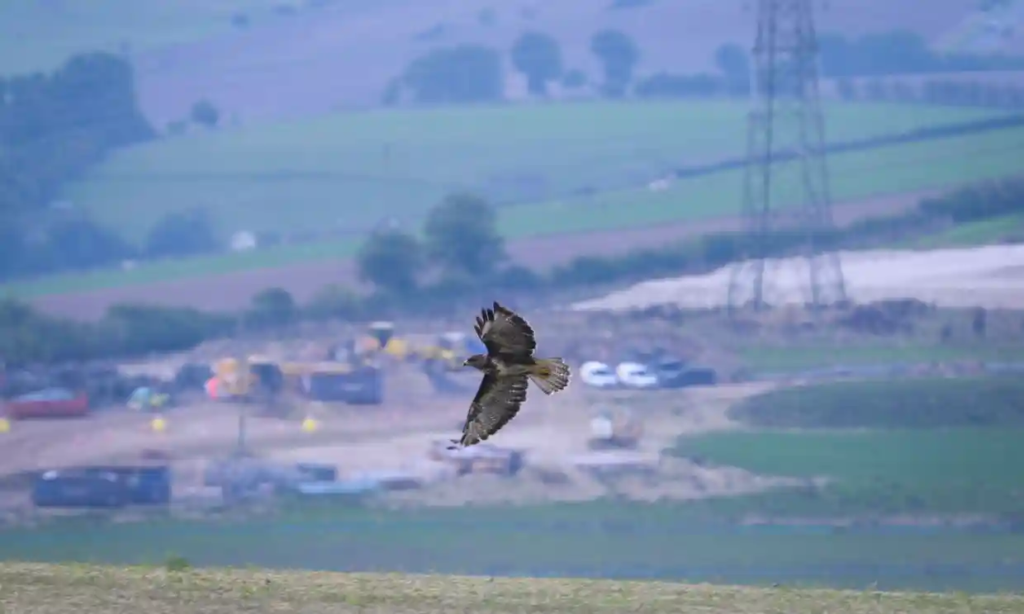The main purpose of this ongoing blog will be to track planetary extreme, or record temperatures related to climate change. Any reports I see of ETs will be listed below the main topic of the day. I’ll refer to extreme or record temperatures as ETs (not extraterrestrials).😉
Main Topic: Hopeful Reports from Montreal’s Convention on Biodiversity
Dear Diary. On a very positive note, I’m finding that more than ever the powers that be want to come into agreement to protect our environment and what is left of the natural flora and fauna on this planet. I’ve noticed this since the start of the Paris Accords in the early 2010s. Now there is word that yet another conference has done groundbreaking work on protecting the planet’s biodiversity. Restoring nature is crucial for adapting to climate change.
Here are two Guardian reports on COP15 from this week:
What’s this unfamiliar feeling I have after the Cop15 meeting? It might just be hope
Tue I Dec 2022
The Montreal biodiversity conference set some ambitious targets. It’s now up to nations – including the UK – to step up

Electricity pylons being removed near Winterbourne, in the Dorset AONB. Photograph: Finnbarr Webster/Getty Images
I don’t normally finish United Nations Cop meetings with a smile on my face. Yet as the sun sets on the UN biodiversity conference, Cop15, in Montreal with a global agreement for nature’s recovery, I’m walking away feeling rather more optimistic than I did only a fortnight ago.
In the early hours of Monday morning in Montreal, Canada, nearly 200 countries agreed and adopted a new “global biodiversity framework” containing various goals and targets. The pact requires all nations – particularly the UK – to dramatically up their game on protecting and restoring nature.
The headline ambition of “30 by 30” was finally adopted, committing governments “to ensure and enable” that, by 2030, at least 30% of land and sea is “effectively conserved and managed through ecologically representative, well-connected and equitably governed systems of protected areas and other effective area-based conservation measures”.
Working by consensus among many countries means that these agreements are the lowest common denominator of what the global community thinks must be done to tackle the climate and nature crises. This is not where you get cutting-edge policy or innovation. And this is why it’s noteworthy when Cops finish with an agreement that represents some sort of progress. Finally, we have a north-star target for biodiversity that can provide that same level of focus as the temperature targets do for climate.
There’s some very heavy lifting to do in the UK over the next eight years to achieve 30×30. Just a couple of months ago, Wildlife and Countryside Link (a coalition of nature charities including The Wildlife Trusts, RSPB and National Trust) published its Progress Report on 30×30 for England. It made for sober reading, detailing how only 3.22% of England’s land and 8% of English waters are effectively protected and managed for nature.
That’s a long way from 30%, but 30×30 is perfectly possible in the UK. For starters, the government must update the mandate for national parks and areas of outstanding natural beauty to prioritise nature’s recovery, as recommended by its own landscapes review of 2018.
It should also designate many more protected sites. Astonishingly there are still patches of Celtic rainforest, lowland raised peatbogs, and chalk streams undesignated in the UK, despite being globally rare habitats. We need to create more highly protected marine areas such as Dogger Bank, which was designated earlier this year but remains our only one. And there should be a new designation, perhaps called wild belt, for land which is knackered for biodiversity, but could and should be managed for nature’s recovery.
Restoring nature is crucial for adapting to climate change. I was pleased to see climate commitments included calling for nature-based solutions that “foster positive impacts of climate action on biodiversity”.
The framework also expects countries to reduce “the overall risk from pesticides … by at least half” by 2030. Amen to that! This requires a big effort in the UK, where so much of our agriculture is addicted to the routine use of chemicals. But we’ve got to do it.

‘The UK’s agriculture is addicted to the routine use of chemicals.’ Pesticides being sprayed on a potato crop Photograph: Loop Images/Universal Images Group/Getty Images
There’s plenty that’s too weak or missing from the Montreal agreement, of course. The targets for ending species extinctions are very woolly, and although there are some warm words about “promoting sustainable consumption patterns”, that’s pretty much as far as they go. There is a suggestion that transnational companies and financial institutions should “regularly monitor, assess, and transparently disclose their risks, dependencies and impacts on biodiversity”, but no call for the mandatory reporting that many hoped for.
Although the agreement recognises that $700bn of financing needs to be provided every year to tackle the global nature crisis, principally from richer to poorer countries, there is little detail on how this will happen. This was a key stumbling block during negotiations. Ultimately, not investing in nature will cost us far more than money.
Of course, none of this will mean anything unless it’s implemented – and that requires governments to urgently develop clear plans to achieve these goals. Unbelievably, our government threatens to make a bad situation worse for nature with the retained EU law bill, which threatens more than 1,000 pieces of environment legislation.
Yet Montreal is still a historic moment.
I heard this week about a senior executive from a global company who said she had been working on sustainability for more than 25 years but had “never really thought much about biodiversity” before Cop15, only climate. That represents environmental illiteracy of the highest order, not least because we have no hope of tackling the climate crisis if nature is in decline. Sadly, it is all too common.
I hope, after Montreal, that no one in business or government will ever forget biodiversity again. After all, the survival of humanity and all other life on Earth depends on it.
- Craig Bennett is the chief executive of The Wildlife Trusts
Cop15 in Montreal: did the summit deliver for the natural world? | Cop15 | The Guardian
Cop15 in Montreal: did the summit deliver for the natural world?
Tue 20 Dec 2022

An Mbuti Indigenous boy runs through the Ituri rainforest in the Democratic Republic of the Congo. The wording on the protection of Indigenous rights and territories in the agreement was largely welcomed. Photograph: Hugh Kinsella Cunningham/EPA
The talking is over, and a text has been agreed on the next decade of targets to save the natural world. Here are the highs and lows of the Convention of Biological Diversity’s (CBD) agreement
Conservation of species
The term “nature positive”, which scientists had said would be the biodiversity equivalent of “net zero”, did not make the final document. Many will see this as a missed opportunity – a unifying idea similar to keeping global heating to within 1.5C. However, the 2030 goal to “take urgent action to halt and reverse biodiversity loss” is still considered a relatively strong call to action.

Many 2030 milestones were removed from the initial text, but then added in the early hours before the final agreement. This includes a goal to reduce extinction risk by 2030, which was missing from the earlier draft. Stuart Butchart, the chief scientist at BirdLife International, said: “The commitment to significantly reduce extinction risk by 2030 was an important and very welcome late reinsertion, though we would have liked to have seen a quantitative target here as for other targets.”
For example, the risk of species going extinct should be reduced by 20% overall by 2030 in order to meet the stated goal of reducing the rate extinctions tenfold by 2050, he says.
There is no 2030 target for increasing species populations abundance. Some earlier drafts included details about enlarging the area of natural ecosystems by at least 5% by 2030, and these targets were removed.
Without such numbers to aim for it is harder to assess and make countries accountable in the short-term, but specific commitments becoming more general is inevitable when seeking compromise with so many countries.
Lots of researchers and scientists think these details are a big miss – although country delegates seem less concerned. “It’s taking us in the right direction but there is a lack of quantification which means it’s hard to hold governments to account,” said Butchart.

The 30×30 target
Many feel the success of the conference hangs on the headline target of protecting 30% of land and sea by 2030. Lots of countries came to the conference saying achieving this was their priority – there were even posters about it in the airport.

The final wording on this has been widely hailed as a success. It is a global target, meaning that the most biodiverse countries will be protecting key areas such as the tropical forests of the Amazon, the Congo basin and Indonesia. Currently, 17% of terrestrial and 10% of marine areas are protected so this is a significant increase, although some groups – including those inspired by EO Wilson’s Half-Earth project – say the text should have pushed for 50%.
Indigenous rights
The main criticism of 30×30 (and other area-based conservation targets) is that implementing them risks violating human rights. This is because of associations with “fortress conservation”, where people who had been stewards of natural spaces for thousands of years were removed by westerners who felt that nature should be separate from humans to be truly wild. It’s a sensitive issue, and lots of the area-based conservation targets in the text were opposed because of these concerns.
Generally, however, the wording on the protection of Indigenous rights and territories was welcomed. It was emphasised throughout the 23 targets and four goals that make up the main agreement. The framework reaffirms the rights of Indigenous peoples and ensures they have a voice in any decision-making. Concerns remain that this may not affect how Indigenous peoples are treated on the ground, but coming up with a strong text was considered important.
Lucy Mulenkei from Kenya, the co-chair of the International Indigenous Forum on Biodiversity (IIFB), said: “Indigenous peoples and local communities are happy that finally we are here. With most of the recommendations that we had submitted and negotiated already reflected we leave Montreal happy and ready for the implementation journey. We are glad we never gave up even when times were tough.”

Restoring degraded land
This target suggests restoring 30% of degraded lands. The text went with a more ambitious target of 30%, instead of 20%, which “is really good and ambitious and necessary”, a delegate from a European country told Reuters. “We were surprised that [the text] is actually capturing most of the things we want to go for,” he added.
Subsidies
At least $1.8tn (£1.48tn) of environmentally harmful subsidies is financing the annihilation of wildlife every year, research shows. This money goes to activities such as high-emission cattle production, forest destruction and pollution from synthetic fertilisers. The failure to remove these subsidies was one of the 20 Aichi biodiversity targets governments failed to meet during the past decade. Redirecting subsidies to support activities such as storing carbon in soil, producing healthier food and growing trees is a huge opportunity.
The final text says harmful subsidies should be reduced by at least $500bn a year by the end of the decade. It does not specify whether they should be eliminated, phased out or reformed, but this is recognised as one of the strongest parts of the agreement.
Finance
Always one of the most contentious areas, finance issues led to delegates from 70 African, South American and Asian countries walking out of negotiations for several hours on Wednesday. In the end it achieved the crucial financial target of $200bn a year from all sources – including public and private sectors – for conservation initiatives, though it demands less from wealthy countries than some developing states had wanted. This target is seen as critical for the successful implementation of any deal.
Developing countries were pushing for $100bn a year to flow from wealthy countries to poorer nations. However, the text mentions only that $20bn – to $30bn a year comes from developed countries by 2030.
The money could come voluntarily from any country – a nod to the developed nations’ desire that countries with large economies, such as China, also contribute. Asked whether China should be considered a developing country, as still defined by the World Bank, the EU commissioner Virginijus Sinkevičius said: “I think we should not stick to 1992 descriptions but see the reality on the ground, and it’s very different from 1992.”
One of the greatest points of contention was whether a new fund should be established for biodiversity. Developing countries such as the Democratic Republic of the Congo, Brazil and Malaysia expressed disappointment that a new, separate fund was not set up.

Digital sequence information
Digital sequence information (DSI) is a policy term referring to the use of genetic sequence data. DSI is derived from the natural world – such as microorganisms, fungi, flora and fauna. It is used to drive breakthroughs in medicine and science, including the creation of Covid-19 tests, vaccines and new cancer drugs, as well as biofuels, crop improvements and research. There are many discoveries yet to be made.

Many of the countries in the global south have the most biodiversity, meaning they, in theory, would contribute the most to DSI. The African Group, Latin America and Caribbean Group (Grulac) and the Asia and Pacific Group have said it is unfair that pharmaceutical companies make huge revenues from creating products and yet they see no benefits.
Cop15 has decided to create a multilateral benefit-sharing mechanism so these countries are rewarded. It would be impractical to create bilateral contracts every time DSI is used because researchers work on many sequences at the same time. A multilateral system would see data being added under certain licences, so if researchers and companies create something of value any revenues that result are shared.
Details will be worked out in the coming years, but the decision to create benefit-sharing from DSI is important. “This compromise was instrumental in reaching broader agreement on the global biodiversity framework,” said Bob Kreiken, a researcher in DSI at Delft University of Technology. “It is the outcome of a cooperative and compromising spirit of the parties and stakeholders involved.”
Pesticides
Risks from pesticides and highly hazardous chemicals would be reduced by at least half. However, the text does not address slashing their overall use. Many argue it is the use of pesticides that should be reduced, not the risk from pesticides. Language on plastic pollution has also been watered down – the final text says countries should be “working towards eliminating plastic pollution”, without any quantifiable targets.
Businesses and consumption
Businesses should also be asked to assess and disclose how they effect and are affected by nature loss, but the document does not make such reporting mandatory. The text encourages policymakers to “encourage and enable” businesses to monitor and assess and disclose their impacts on biodiversity, but the absence of the word “mandatory” is considered a weakening of this target.

It’s a widely held belief that many countries and financial firms would move towards mandatory disclosures anyway. Tony Goldner, who heads a group working on a framework for companies to manage and disclose economic risks related to nature, said: “At an institutional level, the train has left the station in any case because financial institutions are increasingly aware that nature risk is sitting on their balance sheets.”
The use of the language “ensure that large business and financial institutions” creates an obligation on governments to require companies to comply, say the target’s architects.
Many felt there was as a watering down of ambitions on consumption and production, key drivers of biodiversity loss. Previous drafts included a clear ambition to halve the footprint of production and consumption but this was removed, and replaced with a vague commitment by 2030 to “reduce the footprint” with additionalwoolly words such as “substantially” and “significantly”.
There is no mention of the need for dietary change in the text. Huge reductions in meat-eating are essential to avoid the dangers of the climate crisis, and in western countries, beef consumption needs to fall by 90%, research shows.

Reporting and monitoring
The CBD has a history of failure. The world collectively failed to meet a single one of the targets agreed in 2010 in Aichi. It was the second consecutive decade that governments have fallen short of meeting targets.
To prevent a repeat, states have agreed on a monitoring framework that should allow them to regularly evaluate progress and to further be specified in Cop16 in Turkey at the end of 2024.
“While this might seem like a solid plan, there are no binding commitments making the whole mechanism quite weak,” said Dr Imma Oliveras Menor from the Environmental Change Institute at the University of Oxford. “The goals and targets adopted are a great step forward, but many fail at being too broad therefore their implementation will be complex.”
Find more age of extinction coverage here, and follow biodiversity reporters Phoebe Weston and Patrick Greenfield on Twitter for all the latest news and features
Most viewed
- IRS failed to conduct timely mandatory audits of Trump’s taxes while president
- Trump left ‘shockingly gracious’ letter to Biden on leaving office, book says
- Putin admits to ‘complicated’ situation in Russian-occupied Ukraine
- Facial recognition bars lawyer from Girl Scout trip to Rockettes Christmas show
- Police provide first official details of Elon Musk’s alleged stalker incident
Most viewed
Original reporting and incisive analysis, direct from the Guardian every morning
Related:
Here are some “ET’s” recorded from around the planet the last couple of days, their consequences, and some extreme temperature outlooks, as well as some extreme precipitation reports:
Here is more climate and weather news from Wednesday:
(As usual, this will be a fluid post in which more information gets added during the day as it crosses my radar, crediting all who have put it on-line. Items will be archived on this site for posterity. In most instances click on the pictures of each tweet to see each article. The most noteworthy items will be listed first.)
If you like these posts and my work please contribute via the PayPal widget, which has recently been added to this site. Thanks in advance for any support.)
Guy Walton… “The Climate Guy”